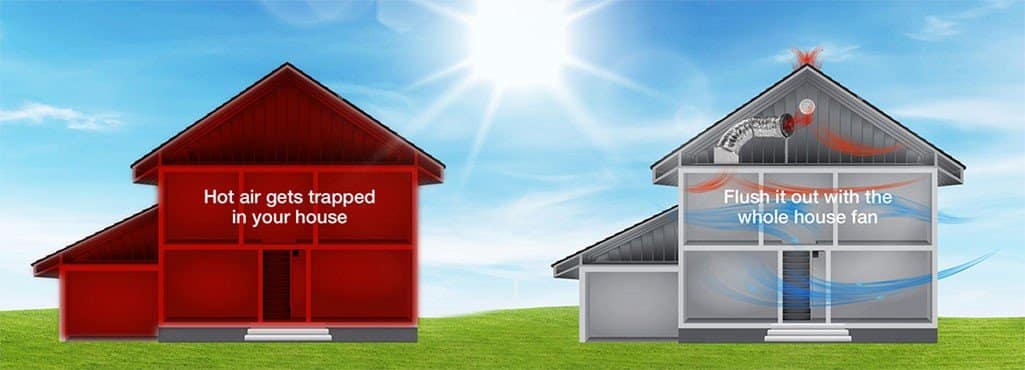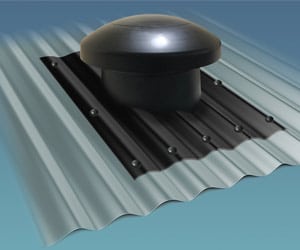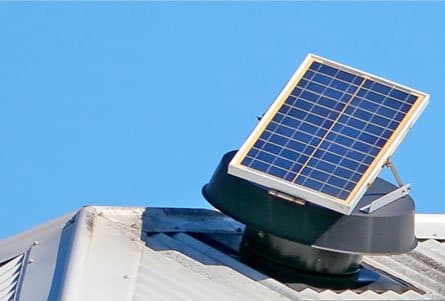
Ensuring good airflow in your home is essential for both comfort and health. Whether it’s improving the circulation of fresh air or reducing pollutants, proper ventilation is key. In fact, with growing concerns about indoor air quality, particularly since the onset of the COVID-19 pandemic, it’s more important than ever to prioritise healthy airflow systems in our homes.
Poor airflow in your house can lead to a range of issues, from stale, stuffy air to the growth of mould and allergens. Fortunately, there are many ways to improve airflow in your house, creating a healthier living environment for you and your family. In this article, we’ll explore the best methods to enhance ventilation, increase airflow, and improve the overall air quality inside your home.
Why Is Airflow So Important for Your Home?
Airflow refers to the movement of air throughout a space, ensuring that fresh air is constantly circulated, and stagnant air is removed. The quality of your indoor air can affect not only your comfort but also your health. Poor ventilation can lead to an accumulation of indoor pollutants, including dust mites, pet dander, carbon monoxide, and volatile organic compounds (VOCs). Additionally, inadequate airflow can promote the growth of mould, which thrives in moist, stagnant conditions.
Good airflow allows your home to remain comfortable by regulating temperature, removing excess moisture, and improving overall air quality. Proper ventilation is also essential for keeping your home healthy by reducing the presence of harmful airborne particles and allergens.
How to Improve Airflow in Your House: Top Tips
1. Invest in a Whole House Fan
A whole house fan is an excellent solution for improving airflow in your home. Unlike air conditioners and ceiling fans that simply circulate the air within a room, a whole house fan works by exhausting stale air from inside the house and drawing fresh air from outside. This results in rapid airflow, cooling down your home naturally while reducing the need for air conditioning.
Whole house fans are particularly beneficial for cooling and ventilating the entire house, as they can remove heat, moisture, and pollutants from the indoor environment. They’re an energy-efficient alternative to air conditioning, as they use minimal electricity by harnessing the power of the outdoor air to refresh indoor spaces.
2. Improve Bathroom and Kitchen Ventilation
Bathrooms and kitchens are often the most humid areas in the home, and without proper ventilation, they can quickly become breeding grounds for mould and mildew. The key to preventing moisture build-up and improving airflow in these spaces is to use an effective ventilation system.
Start by installing a quality room ventilation system, such as the Solatube Enviromax, which is designed to remove excess heat and moisture from high-humidity areas, ensuring your home stays dry and fresh. The Enviromax system operates efficiently to reduce energy costs and provide constant airflow, keeping moisture at bay without adding to your electricity bill. By improving ventilation in your bathroom and kitchen, you can effectively prevent mould and mildew growth, contributing to a healthier living environment.
While Enviromax room ventilation is your best first line of defence, exhaust fans can still be beneficial in providing additional moisture control. Use exhaust fans during and after showers or cooking to quickly expel any lingering moisture. However, because Enviromax ventilation systems are energy-efficient and operate continuously, they should be your primary solution for moisture control.

3. Use Solar-Powered Roof Ventilation
Solatube’s Solar Star is a highly effective roof ventilation solution designed to improve airflow by removing hot air and excess moisture from your roof cavity. The Solar Star uses solar power to operate, meaning it costs nothing to run while providing year-round ventilation. It helps to reduce heat and humidity buildup in your home, preventing the conditions that lead to mould growth and improving air quality.
The Solar Star works by drawing air from your roof cavity, which reduces the risk of humidity-related issues, such as damp, mildew, and unwanted moisture in your home. It operates efficiently even on cloudy days, ensuring your home remains cooler and drier throughout the year.

4. Open Windows for Cross-Ventilation
Cross-ventilation is one of the simplest and most effective methods of improving airflow in your home. To achieve this, open windows on opposite sides of your house to create a natural flow of air. This allows the fresh outdoor air to flow through and push out the stale indoor air, which helps cool down your home and improves air circulation.
For optimal results, open the windows early in the morning or later in the evening, when the outdoor temperature is cooler. During the day, you can close the windows to trap the cooler air inside, helping maintain a comfortable temperature.
5. Utilise Ceiling Fans
Ceiling fans are an excellent way to circulate air in the rooms where you spend the most time. During hot months, they help cool down the room by circulating air, making it feel fresher and more comfortable. In the colder months, you can use ceiling fans in reverse to push warm air downwards, helping to evenly distribute heat throughout the room.
Ceiling fans work best when combined with other ventilation methods, such as opening windows or using a whole house fan, to enhance the airflow in the room.
6. Install Ventilated Skylights or Tubular Skylights
Skylights provide both natural light and ventilation for rooms without windows. Tubular skylights, for example, use reflective tubing to direct sunlight into your home, while also allowing for natural ventilation. By opening or installing skylights with adjustable vents, you can improve airflow, let fresh air in, and allow stale air to escape from your home.
Additionally, skylights can brighten dark rooms, reducing the need for artificial lighting during the day, and improving the overall comfort of your living spaces. Check out our article for a comparison between tubular skylights (a.k.a solar tubes) and ordinary skylights.
7. Use Air Purifiers
Air purifiers are a great way to improve the air quality in your home, especially if you live in an area with high levels of dust, pollen, or other pollutants. An air purifier can filter out airborne particles, allergens, and bacteria, helping to keep the air in your home clean and fresh. Make sure to choose a high-quality air purifier with a HEPA filter for the best results.
8. Keep Doors Open to Promote Airflow
Allowing air to flow freely between rooms is crucial for maintaining good airflow throughout the house. Keeping interior doors open helps air move through your home, especially when paired with fans or open windows. This promotes better air circulation and helps to reduce stuffy or stale air in your rooms.
9. Use Plants for Natural Air Purification
Certain indoor plants, such as spider plants, peace lilies, and snake plants, act as natural air purifiers by absorbing carbon dioxide and releasing oxygen. These plants can help improve the quality of the air in your home while adding a touch of greenery to your space. Keep plants in rooms that need better airflow to naturally purify the air and reduce pollutants.
Further Benefits of Ventilation
In addition to extracting air pollutants from your space, quality ventilation systems are beneficial to both commercial and residential environments for several reasons.
- Continual circulation of fresh air which keeps air cooler, fresher and healthier
- Energy efficient – reduced energy costs because there’s less need for cooling systems
- Keeping the air in the home drier, preventing mould, damp or mildew build-up
- Helps keep the temperature in your home constant year round
The Best Place to Get Indoor Ventilation Systems?
In addition to our whole house fans, we also have roof ventilation products. Speak to one of our expert sales team and we will organise a consultant to provide you with a FREE QUOTE on the best ventilation system for your home. It’s as easy as calling 13 16 19. Get rid of nasty air pollutants and do your bit toward the battle against airborne virus transmission with better indoor ventilation!


Interested in the fan system
Hi Glendda
If you type in your postcode to this link, it will take you to your local Premier Dealer who will be able to assist further. https://solatube.com.au/solatube-premier-dealers/
I have a cracked Solatube dome / cover – how do I obtain a replacement. Have been in contact with the local Wetherill Park dealer and sent them a couple of emails, the last one sent on 9/6/22, but have had no response to date. Was hoping for someone to come and replace it.
Hi Michael
The Sydney Dealership has advised that the product you have is not a Solatube product and have offered suggestions on where you can source a replacement.